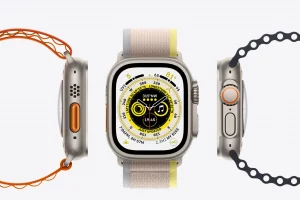Apple’s Better, Special, Different

Watching the Apple keynote this week – and reading this – all highlighted the importance of starting with the product to drive differentiation. Everything Apple does is about difference – not just to others in the market but to what preceded it.
Prices then go up over time and are a result of innovation.
As Tim Cook said in his interview with BusinessWeek:
“We never had an objective to sell a low-cost phone,” says Cook. “Our primary objective is to sell a great phone and provide a great experience, and we figured out a way to do it at a lower cost.”
And critically, the product and pricing are optimised for a specific market – where the Apple ecosystem is most vital – America. As Ben demonstrates well:
The Apple ecosystem is of most value in the American markets first, the European markets next, and the Asian-style markets last … therefore, it’s very rational for Apple to optimise its pricing for the American-style markets, and the most logical price is $550/$99.
What Ben is getting at in all of this is a set of marketing fundamentals I see most marketers, miss:
- Price to product differentiation – not just relative to market but also prior product instantiations. Don’t price solely to category entry point or pricing dynamics.
- Pricing must exist in the context of broader market dynamics in most cases, but not all. There is little logic to the iPhone Pro pricing relative to other competing products. It is priced on its merits as a “luxury” device. Pro is always the misnomer in tech – it’s code for luxury.
- Pricing substitution isn’t necessary – each Apple product is priced relative to the market and its brand effect. iPhones don’t sell for less than they are worth in the hope you will buy iPods and other services. There is no “hope” in Apple’s strategy.
Start with: product (innovation & differentiation), position, price. Not with price, the product, then position.
Effectively Apple’s brand power is the point of leverage and “strategy” insurance. The massive investment in the Apple brand creates the halo that protects pricing power and ensures demand. But without effective product innovation, priced and packaged to the core target market, the brand wouldn’t make the difference up.
Stratechery is a great read and well worth paying for.
You can’t buy love
Qantas’ move to give all us frequent flyers $50 as an apology is a nice gesture to compensate for the hours lost due to delayed flights and hunting for misplaced baggage.
Will it buy any of the love lost since returning to the skies? Unlikely. What the frequent fliers – yours included – want is an idea of what improvement looks like and when it will happen.
For many of us zipping between Melbourne and Sydney, we know the probability of a flight being cancelled is extraordinarily high. Book a 2.30 or one of its past-the-hour cousins, and there is a good chance (based on my experience) that the flight will be cancelled and consolidated with another. It’s not hard to figure out when this is due to a real issue as your new flight will now be inconveniently later. In the main, it’s 30 minutes later.
How about Tile or Apple Tags for our bags – so at least we know where they are and don’t have to suffer painful wait times tracking them down?
Or some certainty on the cost of fares coming down on international routes. $50 doesn’t cover the incredible increases in the cost of travel – especially for small businesses?
At least Alan Joyce – a CEO that should be regarded as one of Australia’s best – has acknowledged the pain many of us experience every week.
Will it make up for lost love for the brand? Not so much. But the gesture matters.
And hopefully, for the exceptional staff, he has in the lounges and onboard, it will relieve some of the grief I see them getting every week from angry and frustrated passengers.
Starbucks 2.0
I’m a coffee fanatic. Anyone that calls for recommendations on New Zealand gets the A-List. And in the top 10 is any of the hot kiwi coffee houses – AllPress, Mecca, Atomic. There are too many to name.
In the US though, it’s much more of a hit or miss affair. That’s why Starbucks remains attractive. Ok, the coffee isn’t off the charts great. But it’s so much better than the alternatives. And as a loyal customer, Howard Schultz seems to be doing a better job of getting it back into shape.
Their efforts to innovate – some of which are driven by listening to customers – occasionally get hammered. Take their new 15th Ave Coffee & Tea. Call it healthy skepticism and cynicism. Or call it brand extremism. Really.
Why cant a corporation create a unique brand experience? “There’s no way a corporate coffee chain can create an authentic neighborhood coffeehouse experience” they say. Lets see. The idea they can’t is not more limiting than suggesting you need to be small do it.
Look at what Toyota did with Lexus. BMW with the mini. McDonalds with it’s coffee houses (invented in NZ). Honda with super light jets. Anheuser Busch with micro beers.
Ok – maybe those that regard themselves as “more authentically tuned” than the rest of us common folks will be repelled by these experiments. But for the mainstream they hold the potential to offer a refreshing and exciting alternative.
Often, attempts to improve the core of a business needs to start at the edge. In a new place. They shouldn’t be viewed as a diversion. One of the great things about achieving scale is the ability to innovate and experiment in ways a single proprietor business might not. And then to take that learning and use it to inform the core.





